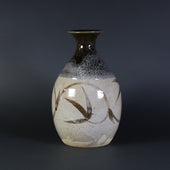Karatsu ware artist
1588 products
1588 products

Karatsu ware is said to have started as a product of firing on the territory of the Hata clan, lords of Kishitake Castle, from the end of the Muromachi period to the Momoyama period. Later, when Toyotomi Hideyoshi dispatched troops to Korea, he brought back Korean potters, who built kilns and began firing ware in various places, which led to an expansion in the production of Karatsu ware.
With the introduction of techniques from Korea, such as climbing kilns, kick wheels, and glazing techniques, the style and variety of ware increased, and as it was distributed throughout the country, Karatsu ware became one of Japan's representative pottery. It became so famous that in western Japan, pottery is referred to as "karatsumono".
In the world of tea since ancient times, there is a ranking system for tea bowls: "First Ido, second Raku, third Karatsu." These tea bowls have been loved by many tea masters as masterpieces of the tea ceremony, and during the Edo period, Ido developed as the official kiln for the Karatsu domain.
By inheriting the techniques of our predecessors, which have been cultivated over a long history, and incorporating the new sensibilities of contemporary artists, each kiln has developed its own unique style. This diverse range of expressions, nurtured by tradition and innovation, is the charm of Karatsu ware that captivates fans around the world.